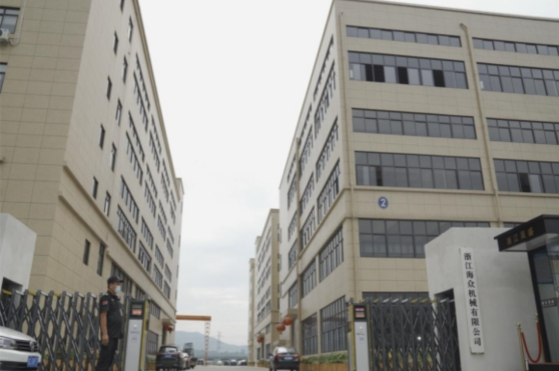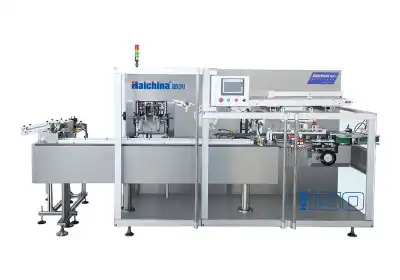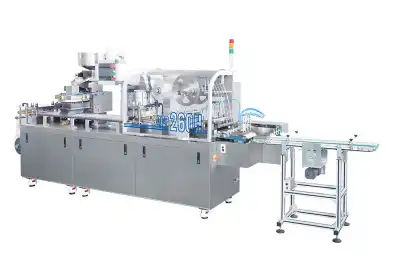Understanding Blister Packaging: Features and Applications
What is Blister Packaging?
Blister packaging is a method that involves sealing a product within a preformed plastic cavity, commonly known as a "blister," combined with a backing material such as cardboard or aluminum foil. This packaging style provides a protective, individual compartment for each product, which helps to prevent damage and contamination. The transparent plastic allows customers to clearly see the product inside, enhancing its appeal. Blister packaging machines automate this sealing and forming process, boosting production speed and ensuring uniformity, which is especially valuable in industries requiring high standards of hygiene and safety.
Key Features of Blister Packaging
Blister packaging and blister packaging machines boast several distinctive features that make it a popular choice across various industries:
- Tamper-evident design
- Product visibility
- Customizable shapes and sizes
- Barrier protection against moisture and contaminants
- Extended shelf life for products
Common Applications of Blister Packaging
Blister packaging finds widespread use in numerous sectors, including:
- Pharmaceuticals: Pills, capsules, and medical devices
- Consumer goods: Electronics, toys, and hardware
- Food industry: Chewing gum, candies, and portion-controlled items
- Personal care: Razors, toothbrushes, and cosmetics
Exploring Sachet Packaging: Characteristics and Use Cases
Defining Sachet Packaging
Sachet packaging refers to the method of sealing products within small, often single-use pouches made from flexible materials like plastic, foil, or laminated films. This packaging format is favored for its convenience and ease of transport, making it highly portable. It is also cost-effective, especially when packaging small quantities or samples. The production of sachets is highly efficient thanks to sachet packaging machines, which automate the sealing and filling processes, allowing manufacturers to meet high-volume demands quickly and maintain consistent quality throughout large production runs.
Distinctive Attributes of Sachet Packaging
Sachet packaging and blister packaging machines offer several unique advantages:
- Lightweight and portable design
- Cost-effective for small quantities
- Ideal for single-use or sample-size products
- Versatile material options for different barrier properties
- Easy to open and dispose of
Industries Utilizing Sachet Packaging
Sachet packaging is prevalent in various sectors, including:
- Food and beverage: Condiments, instant coffee, and powdered drinks
- Personal care: Shampoo, lotion, and facial masks
- Pharmaceuticals: Powdered medications and topical treatments
- Household products: Detergents, cleaning solutions, and air fresheners
Comparative Analysis: Blister vs Sachet Packaging
Product Protection and Shelf Life
Blister packaging generally provides superior protection against both physical damage and environmental factors compared to sachet packaging. The rigid structure of blister packs effectively safeguards delicate or fragile items from impacts, crushing, and deformation. Additionally, blister packaging creates a reliable barrier against moisture, oxygen, and other contaminants, which helps maintain product integrity and extends shelf life significantly. Sachet packaging, while offering good barrier properties depending on the materials used, tends to be more vulnerable to punctures, tears, or accidental openings due to its flexible nature. Despite this, sachets are particularly effective at preserving the freshness and usability of single-use portions, making them well-suited for products that need to be consumed shortly after opening.
Cost Considerations and Production Efficiency
Sachet packaging is typically more cost-effective than blister packaging due to its lower material costs and faster production speeds. This makes sachets ideal for packaging high volumes of low-value or single-use products, where keeping costs down is a priority. Conversely, blister packaging usually requires more expensive materials and more complex machinery, such as blister packaging machines, leading to higher upfront costs. However, the enhanced product protection and premium presentation offered by blister packs can justify these additional expenses, especially for delicate, high-value, or regulated products. The decision to use blister or sachet packaging largely depends on striking the right balance between production costs, product value, and the intended market positioning to optimize profitability and consumer appeal.
Consumer Convenience and Marketing Impact
Both blister and sachet packaging offer distinct advantages that cater to consumer convenience and marketing goals. Blister packaging allows for excellent product visibility through transparent cavities, enabling consumers to inspect the product visually before purchase, which can build confidence and perceived quality. The rigid and polished look of blister packs also projects a professional and high-end image. On the other hand, sachet packaging excels in portability and user-friendliness; its compact size and easy-to-open design make it highly convenient for on-the-go consumption and ideal for sample distributions. Ultimately, the choice between blister and sachet packaging can greatly influence a product’s market appeal, customer satisfaction, and overall user experience.
Conclusion
The choice between blister packaging and sachet packaging depends on various factors, including product characteristics, target market, and industry requirements. Blister packaging offers superior protection and visibility, making it ideal for high-value items and products requiring tamper-evident packaging. Sachet packaging excels in portability, cost-effectiveness, and single-use applications. By carefully considering these factors and leveraging advanced packaging machinery such as blister packaging machines, businesses can optimize their packaging strategies to enhance product protection, improve consumer experience, and drive market success.
FAQs
Which packaging method is more environmentally friendly?
The environmental impact depends on the materials used. Both can be made eco-friendly with recyclable or biodegradable materials.
Can blister packaging be used for liquids?
While less common, specially designed blister packaging can accommodate liquids and gels.
Are sachet packages suitable for medical products?
Yes, sachets are used for some medical products, especially single-dose medications and topical treatments.
Which packaging type is better for food products?
It depends on the specific food item. Blister packs are great for solid foods, while sachets excel for powders and liquids.
Expert Packaging Solutions | Haichina
At Haichina, we specialize in cutting-edge blister packaging machines and versatile packaging solutions. Our state-of-the-art equipment ensures optimal performance, adhering to stringent quality standards. With over two decades of industry expertise, our factory manufactures innovative packaging machinery tailored to diverse needs. Choose Haichina for unparalleled quality, efficiency, and customized packaging solutions. Contact us at [email protected] to explore how our advanced packaging technology can elevate your products.
References
Johnson, M. (2022). "Comparative Analysis of Packaging Methods in the Pharmaceutical Industry." Journal of Pharmaceutical Packaging, 15(3), 78-92.
Smith, A. & Brown, L. (2021). "Consumer Preferences in Product Packaging: A Global Market Study." International Journal of Marketing Research, 33(2), 210-225.
Garcia, R. (2023). "Innovations in Blister Packaging Technology: A Review." Packaging Science and Technology, 18(4), 301-315.
Lee, S. et al. (2022). "Environmental Impact Assessment of Various Packaging Materials." Journal of Sustainable Packaging, 9(1), 45-60.
Wong, H. (2021). "Sachet Packaging: Applications and Advancements in the Food Industry." Food Packaging and Shelf Life, 27, 100615.
Patel, K. & Mehta, R. (2023). "Cost-Benefit Analysis of Blister vs. Sachet Packaging in the Personal Care Sector." International Journal of Packaging Technology, 41(3), 180-195.




